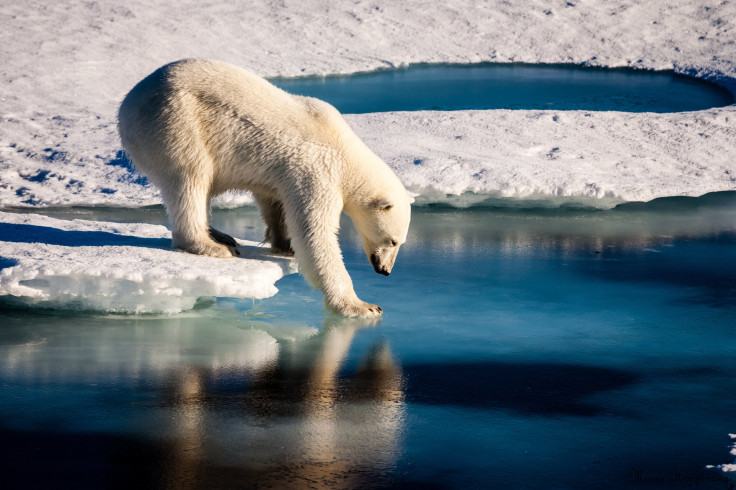Polar Bears Suffering From 'High-Energy, High-Fat Lifestyle' Amid Changing Climate
As the sea ice cover on Earth’s polar regions continues to fragment and diminish, it has a clear and negative impact on some regional populations of polar bears in the Arctic. New research has established the physiological factors that make the Arctic’s top predator so vulnerable to changes in the sea ice.
It turns out in the extreme conditions of their Arctic home, polar bears have a “high-energy, high-fat lifestyle” to survive. Their metabolic rate was found to about 60 percent higher than was previously thought, and to meet that high requirement of energy, they need to consume a lot of fat-rich prey, like seals. But since the seals are hard to come by in ice-free conditions, which are lasting longer every year, the polar bears are struggling.
“We’ve been documenting declines in polar bear survival rates, body condition, and population numbers over the past decade. This study identifies the mechanisms that are driving those declines by looking at the actual energy needs of polar bears and how often they’re able to catch seals,” Anthony Pagano of U.S. Geological Survey, currently a Ph.D. candidate at University of California, Santa Cruz and first author of the paper, said in a statement Thursday.
Using high-tech collars that monitored behavior, hunting success and metabolic rates, the researchers followed nine female polar bears without cubs through springtime, as the animals went hunting on sea ice over Beaufort Sea. They found five of the nine bears lost body mass in four months that should have been times when they put on fat.
“This was at the start of the period from April through July when polar bears catch most of their prey and put on most of the body fat they need to sustain them throughout the year,” Pagano said in the statement.

As more sea ice melts in a warming Arctic, polar bears are forced to travel longer distances to find prey, as well as move farther north with the retreating ice in the summer. As they move greater distances, they use up more energy which they find harder to replenish, for which the primary source is seals.
“By simultaneously measuring field metabolic rates, daily activity patterns, body condition, and foraging success of polar bears moving on the spring sea ice, we found that high metabolic rates (1.6 times greater than previously assumed) coupled with low intake of fat-rich marine mammal prey resulted in an energy deficit for more than half of the bears examined. Activity and movement on the sea ice strongly influenced metabolic demands,” the researchers summarized in the abstract of their paper.
There are 19 subpopulations of polar bears, and all of them are affected negatively to varying degrees by the reducing Arctic sea ice. The loss of sea ice is also recognized “as the most serious threat to polar bears” by the International Union for Conservation of Nature’s Red List of Threatened Species, which lists the animal as vulnerable. Global population of polar bears, currently estimated at about 20,000-25,000 individuals, could drop by as much as 30 percent over the next 40 years, also a result of shrinking sea ice.
Human activity, especially the burning of fossil fuels at a large scale since the beginning of the Industrial Revolution over 200 years ago, has exacerbated the pace of climate change manifold its normal speed. Other pollutants created by humans have worsened the problem further, including in the case of polar bears.
The research paper, titled “High-energy, high-fat lifestyle challenges an Arctic apex predator, the polar bear,” appeared online Friday in the journal Science.
© Copyright IBTimes 2024. All rights reserved.




















